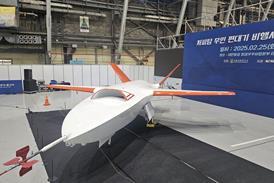You've seen it all before. A recession coincides with the delivery of hundreds of new aircraft. Swamped with capacity, airlines seek to extract some revenue from their glossy new machines by placing too much capacity into the marketplace. Yields and load factors plummet, and the red ink flows. All future airliner orders are put on hold.
Then, when the recession finally ends, there is a brief period of joy when the travel markets are buoyant again, the weakest airlines have failed, and capacity comes back into line with demand. Since nobody has ordered any aircraft for a few years, absurd increases in capacity are impossible and most airlines can enjoy relative prosperity.
Starved of surplus capacity and worried about how they will contain the inexorable growth of the future, carriers then start ordering aircraft again. These planes are delivered two or three years down the line, just in time to coincide with the next recession.
Is this all happening again? Any casual observer might think so. After two record years of profits, many major carriers have begun to order aircraft again in large numbers. The only uncertainties about the next recession are its timing and severity, but most bets are on early in the next century. This time around, many economists are predicting that the millennium change will distort the cycle because infrastructure projects timed to coincide with the year 2000 will boost economic growth, unlike the last millennium change which provoked a recession due to irrational fear of the future.
Given that the current round of aircraft orders has been delayed by fears of future overcapacity, and by the need to repair balance sheets and restore earnings first, those deliveries could just coincide nicely with the next downturn.
There are several reasons why this unpleasant scenario may not develop this time around. First, the mandatory retirement of noisier Stage 2 aircraft around the end of the century will mean that carriers really will have to use their new aircraft to replace old ones, rather than succumbing to the powerful temptation of retaining the older models as well as the new aircraft.
Second, the wise carriers - like American Airlines - are building considerable flexibility into their order profiles, allowing later decision making on delivery schedules. The major manufacturers have made this possible by reducing aircraft assembly cycle times.
Third, the vicious and long-lasting nature of the 1990s recession, combined with increasing competition, have made airlines wary of over-expansion. Battered but wiser, carriers will act with more restraint next time around, say the optimists.
Much merit is attached to all three arguments, but they are not infallible. Stage 2 aircraft can be kept in service through hushkitting or re-engining, at least as long as fuel prices do not reach absurd levels.
The efficacy of flexible delivery schedules has yet to be tested, and much depends on the view that manufacturers take. If, say, American defers delivery of some aircraft 18-24 months ahead of completion, Boeing may well be tempted to finish the aircraft anyway, particularly if other airlines or leasing companies are ready to step in and take over the delivery slot.
Given that metal will already have been cut, this action may make a great deal of sense from Boeing's perspective.
Ultimately, however, it is the degree of restraint exercised by airline managers which will determine the outcome. When things are going well, the pressure to keep expanding is relentless. All businesses tend to follow the 'expand or die' mentality, but airlines are particularly vulnerable to it.
For an airline, expansion is appealing for several reasons. Adding new destinations, increasing frequencies and introducing larger aircraft can stimulate extra traffic, and can damage competitors. Expansionary moves can counteract competitors' activity. Growth helps companies to cover their overhead, and is especially beneficial if it can be done while increasing aircraft utilisation and employee productivity. Furthermore, the seniority system for flight and cabin crew means that these employees become more expensive over time. The only way to cope with that is to grow. Then, of course, there is corporate ego to consider.
There are already some signs that the growth imperative is back with us. Take Air Canada, which ordered Airbuses to replace its DC-9s and B747 Classics, then decided to keep the older aircraft as a cheap, quick way of adding capacity.
The wisest airline managers know when to keep growing and when to stop. But in the heat of battle, it is all too easy to be carried away by events, particularly when competitors are making aggressive moves. Capacity is not always king.
Source: Airline Business























